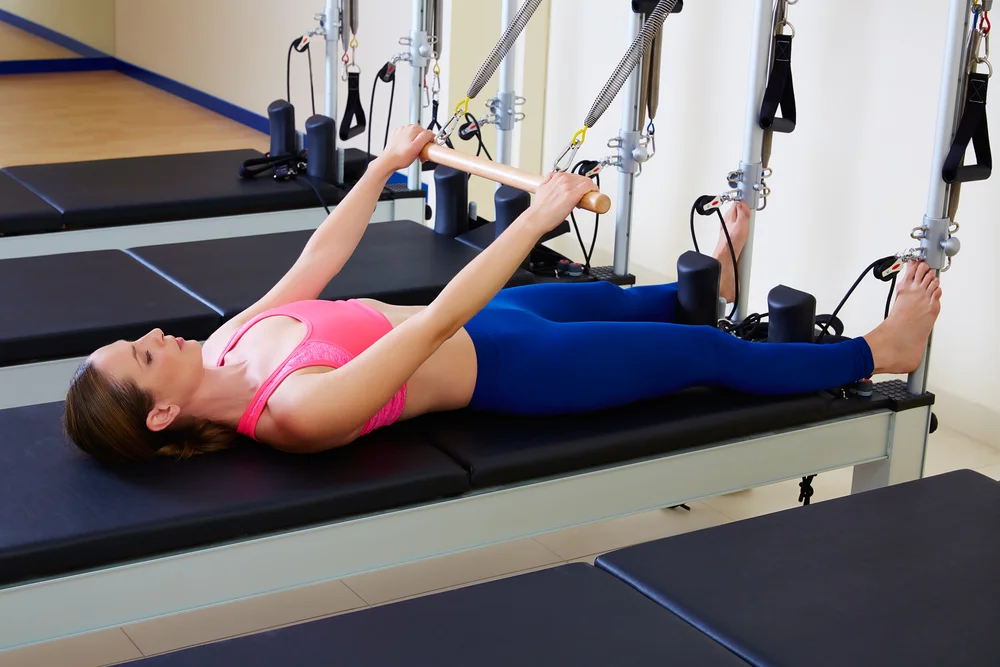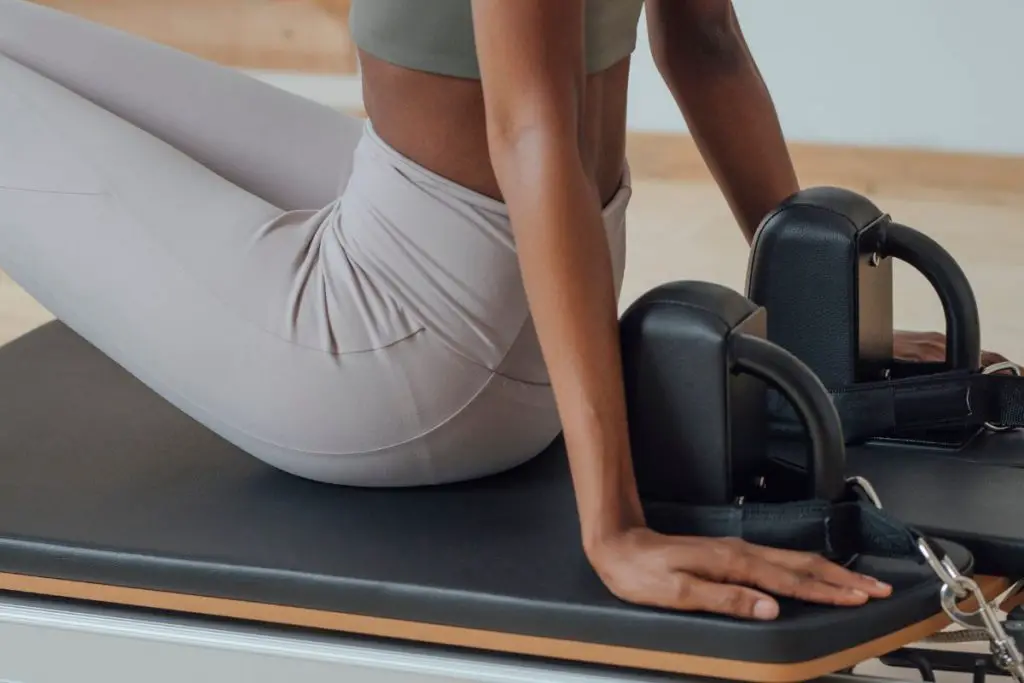Health

Have you been struggling with constipation recently and want to know if Pilates can help? Maybe you have heard of some exercises that can help with constipation and want to know if Pilates is one of them?
Or are you curious and want to know more? No matter what the reason is that brought you here, we have the answers for you!
Finding out how you can help your constipation through exercise can be tricky. After all, you are often in pain, so exercise is the last thing on your mind! But when you want to know more, you are met with conflicting advice that leaves you unsure where to turn.
In pain, frustrated, and overwhelmed, you wonder if you will ever find out if Pilates can help you.
Well, no more! Today we are here with the answers you need! Keep reading to find out if Pilates can help with constipation and how it could help with your gut health today!
Can Pilates Help With Constipation?
Let’s dive straight into it! Yes, Pilates can help with constipation and general gut health. If you have been struggling to have a bowel movement, then Pilates could help you! You can try out some exercises online, or head to a Pilates class if you feel fit and well to do so.
It’s worth noting that if you are in pain, or are concerned for your health, speak to a medical professional. While Pilates can help restore gut health and have a bowel movement, it is not a cure for any chronic constipation or gut issues you might be having.
Alongside trying Pilates, we recommend you seek help from your doctor to ensure there isn’t a serious reason why you are constipated.
Now that we have established that Pilates can help with constipation, let’s move on and look at how and why Pilates can help with constipation!
Why Does Pilates Help With Constipation?
So why does Pilates help with constipation? Well, Pilates stimulates your digestive system, encouraging the poop to move through! This is done through abdominal work, inversions, and twisting exercises.
Pilates focuses on engaging your core, and strengthening your abdominal muscles and organs as it does. Doing so makes your body stronger and should help pass any poop you have that hasn’t yet come out.
These exercises can also help to relax your anal sphincter, making it easier for movements to pass through. There have been many studies and tests performed over the years, and all of these have found that Pilates is an effective way to aid constipation!
Of course, this might not work for everyone! It is worth trying, especially if you can’t speak to a pharmacist or doctor about your constipation. It’s best to try these exercises before your first meal in the morning, or an hour after your last meal.
If you regularly suffer from constipation, or occasionally have issues, doing some Pilates movements daily can help improve your core and gut health!
How Can I Use Pilates To Help With Constipation?

You can try a few Pilates movements to help with your constipation. Most of these can be done at home, but if you want to use any equipment or machines to do them, it is best to head along to your nearest Pilates studio.
You can let your instructor know that you would like some movements to help with your gut and constipation and they should be able to provide you with some exercises and adjust the class to your needs.
You can also head online to find a wealth of tutorials and workouts you can follow along to. Some of these will be tailored towards digestion and constipation, you can find our favorite Pilates workout for digestion here.
Below, we have a list of our favorite Pilates moves to help with constipation too, let’s take a look at them now.
Breathing
The most important part of Pilates, regardless of your goal, is breathing. By actively focusing on your breath as you move through different Pilates positions you will massage your abdominal organs and strengthen your diaphragm muscles.
This is known as lateral breathing, where you inhale fully through your nose, focusing on your breath expanding your rib cage.
Exhale through your mouth like you are blowing through a straw. Focus on your rib cage squeezing together and your naval drawing into your spine as you exhale.
Doing so will engage your core and massage your muscles, helping move things along nicely in your gut!
Mat Movements
There are several mat movements too that can help improve your constipation. These can all be done at home, providing you have a mat to use. If you don’t, a thick blanket will also work well!
Criss Cross
The Criss Cross requires you to twist, which can help massage your core muscles, improving your gut health.
To do this movement, lie on the mat on your back. Lift your legs into a tabletop position, with your knees bent at 90 degrees over your hips.
Place your hands behind your head and spread your elbows wide. Next, curl your head, neck, and shoulders off the mat as you exhale. Twist your upper body to the right and extend your left leg.
Inhale and rotate your body to the center. Repeat on the opposite side on the next exhale, twisting your body to the left and extending your right leg. To return to the center, inhale and move your body back.
The twisting movement should be repeated eight to ten times. Don’t forget to use your breathing while you do this to work out your abdominal muscles.
Pelvic Clocks
Another exercise you can try is Pelvic Clocks. To start, lie on your back with your feet flat on the mat.
Bend your legs and keep them at hip distance apart, parallel to each other. Allow your arms to rest at your sides with your palms either up or down.
Imagine the face of a clock flat at the front of your pelvis. The 12.00 position is your belly button, and the 6.00 sits above your pubic bone. Each bony hip represents 3.00 and 9.000.
Start by tilting your pelvis so 6.00 (your pubic bone) is pointing up and your 12.00 (belly button) has sunk near the mat.
You can then tilt your pelvis the other way so that 6.00 is closer to the mat, and 12.00 is higher. Doing so will create a curve in your lower back.
Continue circling the pelvis like you are rolling a marble around the clock’s face. Reverse the swirl to further relax your abdominal muscles.
Roll Up
You can also try the roll-up, which is similar to a crunch or sit-up. Start on your back with your legs straight and your arms on the mat behind you. Take a deep inhale. As you exhale, bring your arms overhead in an arc.
Once your arms move past 90 degrees, curl your head, neck, and shoulder blades off the mat. Pause and take another full inhale. Use the next exhale to roll up, you should feel your ribs sliding towards your pelvis here.
When sitting all the way up, stretch your fingers towards your toes, giving your spine a C-shape. Inhale again to lift your spine from your pelvis until you are sitting up straight. Exhale and roll back down and repeat as many times as you wish.
Reformer
Another option is to use the Reformer. This machine can help you achieve some movements you just can’t do alone!
The Reformer can help to stretch and relax the psoas. When this psoas gets tight, it can compress in the abdomen, negatively impacting your digestive tract.
Spending time stretching and relaxing the psoas can help to ease constipation, along with massaging your internal organs to help you make bowel movements.
You can use a Reformer at your local Pilates studio that can help you to stretch and ease the tenseness in any of your abdominal muscles, helping to alleviate your symptoms of constipation.
Final Thoughts
And there you have it, Pilates can help with constipation! By trying out some of the simple exercises we have suggested you can help with your abdominal muscles and organs, stretching and strengthening them.
Doing so regularly can reduce how often you get constipation, helping strengthen and improve your gut health!





